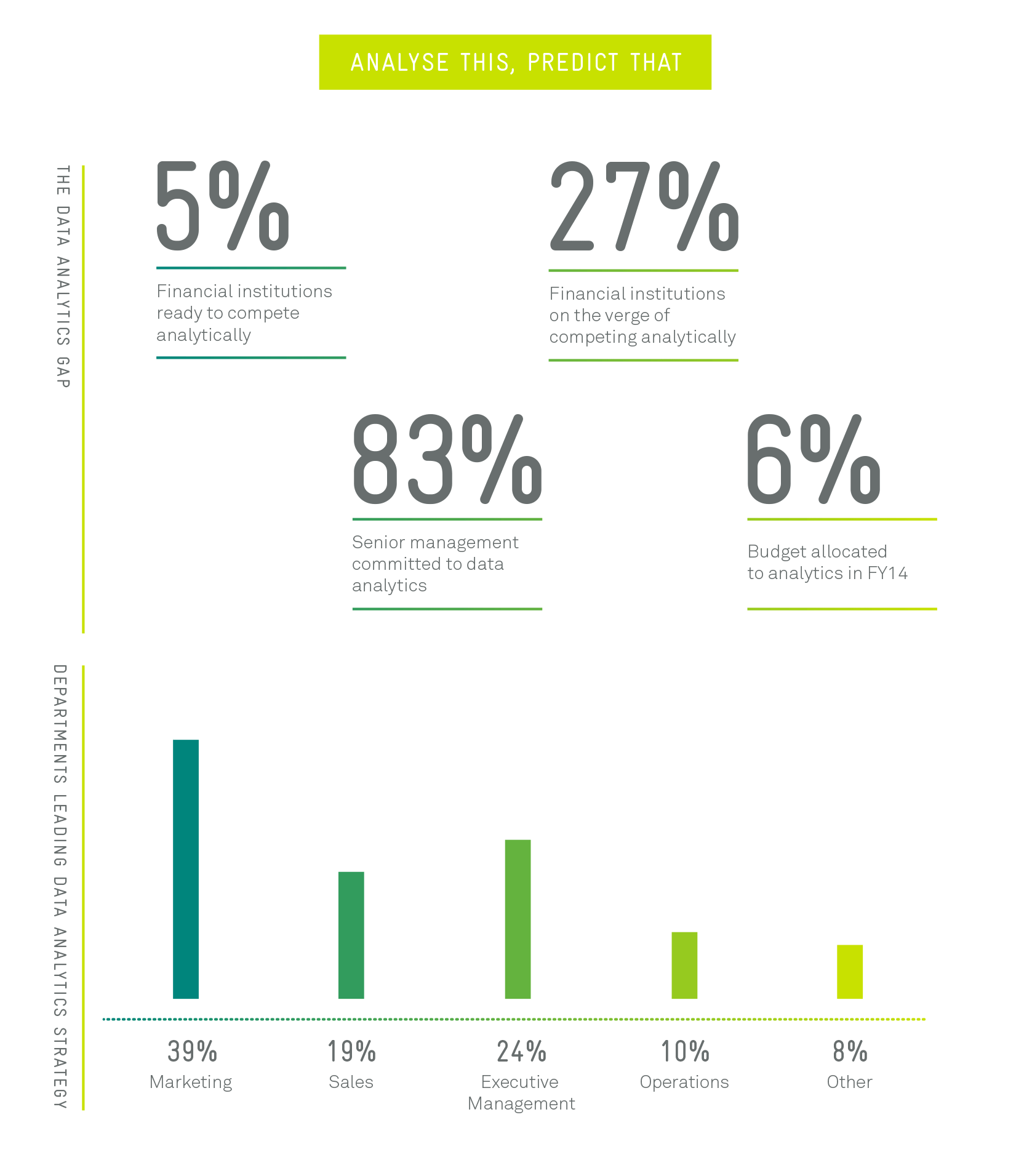Tech-savvy, number-crunching start-ups are flooding into the financial services industry, where data analysis holds the key to the future.
Customer engagement through analytics
The financial world is looking towards Asia for its future growth, as the market is predicted to overtake North America as the largest wealth management market in the world by 2015. Yet start-ups are harnessing the power of deep data analytics to increase their competitiveness – a market in which 68 per cent of the traditional banks are not yet ready to compete.
To maintain their share of the market and capitalise on the burgeoning Asian market, banks must embrace technology and the productivity benefits they bring.
IDEA IN BRIEF
Start-up companies are exploiting a gap in the analytics market to gain a competitive edge in the financial sector.
- Data analytics can provide a more personalised, engaging experience for customers.
- Only 5 per cent of financial institutions consider themselves ready to compete analytically.
- Marketing departments are increasingly taking the lead in analytics strategy.
Financial technology (or fin-tech) start-ups in the region specialising in data analytics and personal finance management are attracting four times more venture capital than the market as a whole, Telstra’s Analyse This, Predict That report reveals.
“This is also occurring at the same time as generations X and Y hold a more prominent position as customers of financial institutions, being responsible for half of all spending and borrowing in Australia,” report author Rocky Scopelliti, group general manager for Telstra’s banking, finance and insurance group, says.
“They are fuelling these new start-ups as they are seeking offerings beyond traditional financial services products and are prepared to look outside traditional providers to fulfil these needs.”
Accenture valued the global FinTech market at US$2.97 billion in 2013, with the Asia-Pacific sector valued at US$104 million.
Chief executives need to commit
The ‘Analyse This, Predict That’ report, which studied more than 3100 consumers from Australia, Singapore, Malaysia, Indonesia and Hong Kong earlier this year, found that data analytics can change consumer perceptions of their financial services provider.

Data analytics-enabled financial services strengths lie in their ability to provide a more personalised, engaging experience. They support strategies to acquire, engage or retain customers, whether executed through a branch, contact centre or digital consumer channel.
The study of 43 financial institutions across the Asia-Pacific region indicates that 68 per cent of organisations say they are not ready to compete analytically. “This is a huge market gap,” Scopelliti says.
The report found gaps in analytical capability could explain the growing investment in the field. For the FY14. The average investment in data analytics programs was six per cent of companies’ operating budgets. That’s predicted to lead to a 6.3 per cent increase in company performance, with sales and marketing teams now driving data analytics programs and strategies.

About 30 per cent of the surveyed financial institutions perceived they were on the verge of, or ready to, compete using data analytic capability.
However, 17 per cent of chief executives and leadership teams are not prioritising data analytics programs. “Legacy systems appear to be what is holding a lot of organisations back,” Scopelliti says.
He says it is hard to put a baseline on the investment that banks need to make to ready themselves for competition in analytics. He explains that if an organisation were in stage one or two of a five-step maturity model, business intelligence would generally be disbursed widely across the organisation.
“You might have the operations area collecting, analysing and using data for analytical reasons – you could find marketing doing the same, and security using the capability for fraud,” he says.
“The problem is that you have these silos of data and analytics very localised at the departmental level, and there is no enterprise-wide ability for them to cross-use data generated from the same customer or set of events across the whole enterprise.”
He says the key to future success is well-developed capabilities in analytics and information gathering, but there is a limited window of opportunity for businesses to build on their existing good relationships with customers.
[ninja_form id=18]


